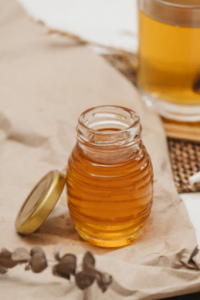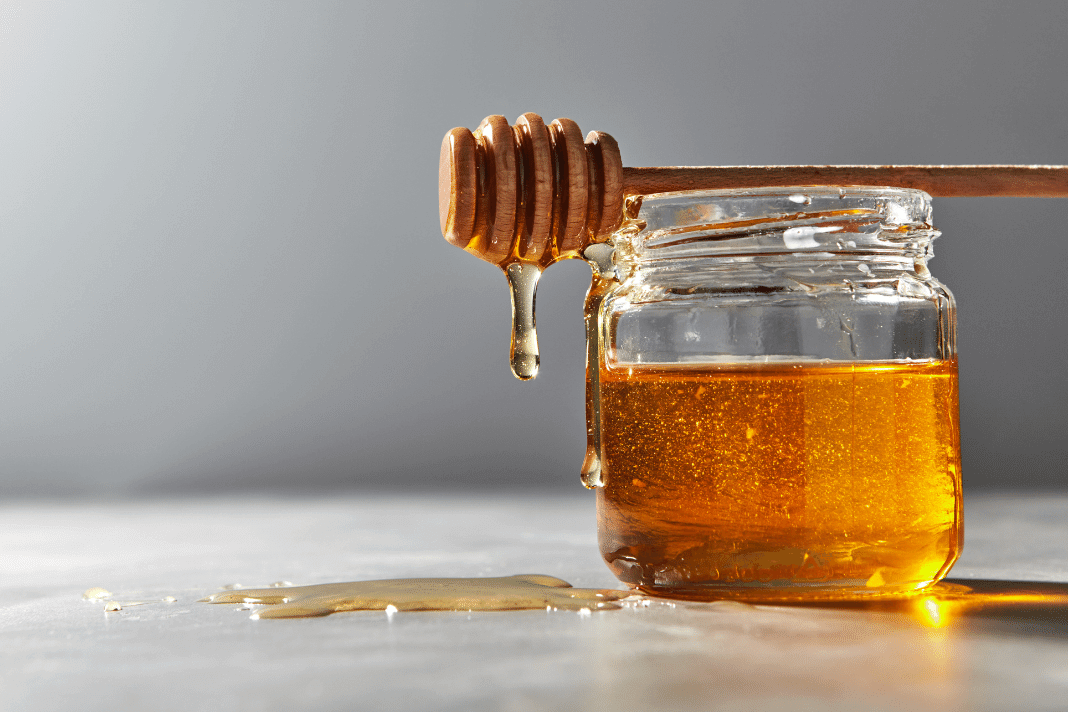Nowadays, when mankind search for expensive solutions and expensive drugs, the tendency is turning to a healthy diet and unpolluted natural products. By use of organic food, people recognize that can significantly alleviate problems and even cure some diseases.
Today exposure to pesticides, preservatives, irradiation, genetically modified food, additives, and stress of every kind is very high, and these negative factors leave a lasting impact on our health.
Bee products are a rare type of food that comes to the consumer in an unmodified form.

Scientific knowledge, which has been reached in recent years, tells us that daily consumption of honey in small quantities, by at least one teaspoon a day, provides a number of beneficial effects on human health.
It is the cheapest source of health, which can now be purchased.
What is the honey?
It is the most accessible bee product used since ancient times. It is also called “the gold of nature˝, and “forgotten treasure of history”. Honey was the first sweet taste that mankind tasted.
Honey is a sweet, thick, viscous liquid or crystallized substance that people didn’t successes to produce on industrial way, unlike ordinary sugar that is just “raw energy”, contains simple, easily digestible sugars fructose and glucose, followed by vitamins, minerals, proteins, ferments, plant hormones, flavonoids …
Chemical composition of honey
It is a mixture mainly of carbohydrates and water, and in small quantities containing organic acids, minerals, vitamins, enzymes, antioxidants and other substances.
75-80% of honey represents a mixture of simple sugars or monosaccharides (Glucose and fructose) and complex sugars (disaccharides, oligosaccharides).
Glucose and fructose are simple and easily digestible sugars, which are directly carried in the blood (an excellent source of energy).
Glucose can easily crystallize, is not hydroscopic and about 20% is less sweet than fructose.
– Fructose or fruit sugar is present from 38 to 42%
– Glucose or dextrose is represented by 30-32%
– Sucrose or ordinary sugar up to 10%
– Maltose and other disaccharides from 1 to 2%
– Polysaccharides from 0 to 1.5%
Honey contains from 15 to 23% water, its amount depends on the climatic conditions, the effect of bee society, the humidity, the temperature in the hive, and vegetable origin. Ideal amount would be about 18%, and tolerates up to 20% (with a higher percentage of water honey has been used for other purposes)
It contains from 1 to 4% organic acid, and they are formic, oxalic, succinic, citric, tartaric, lactic, butyric, malic acid and other, which give the acidity of honey in a pH range from 3.2 to 6.5.
It also contains 0.1 to 0.2% minerals. Darker honeys are rich in mineral salts, where dominate potassium, sodium, calcium, phosphorus, chlorine, manganese, iron and aluminum.
Enzymes or fermented substances are found in every living cell, and serve as catalysts for all chemical reactions in the body. They break down complex molecules into simpler and are involved in the biosynthesis of complex substances.
Honey contains an important enzyme invertase, which breaks down sucrose into glucose and fructose, as well amylase, which participates in the degradation of starch.
Its enzymes activate the digestive processes in the body, stimulates the secretory activity of the stomach and intestines, and facilitating the absorption of all nutrients.
Honey contains vitamins in very small quantities, and they are B1, B2, B3, B5, B6, Bc, E, K, C and carotene..

Good to Know – Some facts about honey
1. The natural property of honey is the crystallization, the supersaturation of simple sugars.
2. All bee products should be kept as long as possible in the mouth, because they contain a large number of simple substances that can be absorbed directly into the blood through the under tong blood vessels. This ensures maximum efficiency, because if they are immediately swallowed, stomach acid part of these substances will break down immediately.
3. Darker color honey contains more minerals than lighter honeys species.
4. Honey has hydroscopic properties, therefore we should always strive to take honey with liquid (large amounts of honey taken on an empty stomach can cause stomach pain).
5. During decristalyzation process, honey should not be heated to a temperature higher than 40 °C , because will lose valuable properties.
6. Honey should always be taken with a clean, dry wood, plastic, ceramic or glass items, not metal spoons. When contacting the metal with honey comes to reactions of organic acids from honey and metals (Fe, Zn, etc.) which leads to undesirable reactions in the human body.
7. Honey easily and quickly absorbed foreign odors, which must be taken into account during storage.
8. Pollen analysis is an indicator of origin and quality of honey.
9. It is recommended to consume honey from the area where you live, because only those honey containing pollen from that area. The organism thus getting used to these types of pollen and creates resistance to allergic reactions.
10. Honey is stored in sealed containers in a dry, dark place at room temperature. Under these conditions, negligible honey loses its properties within two years. Some authors recommend storing honey at temperatures of 5 ° C to 10 ° C. Under these conditions, honey can maintain its properties over ten years or more.
11. One liter of honey has a weight of 1.42 kg.
12. Honey freezes at a temperature of -17 ° C, and its volume is reduced by 10%.
13. The fastest crystallization process takes place at a temperature of 14 ° C.
How to recognize natural honey from honey of questionable quality
The presence of water in honey can be recognized by a drop of honey, a drop from unnatural honey rapidly spread across the glass surface, while a drop of pure honey remains flattened.
Is honey “Nature” or not, we can discern in his leaking from spoon. Unnatural honey is more liquid and quickly leaked from the spoon, while nature honey is denser, and from the spoon is leaking very slowly and without interruption.
When the jar with honey turns, air balloon must move slowly towards the top as a single sphere.

